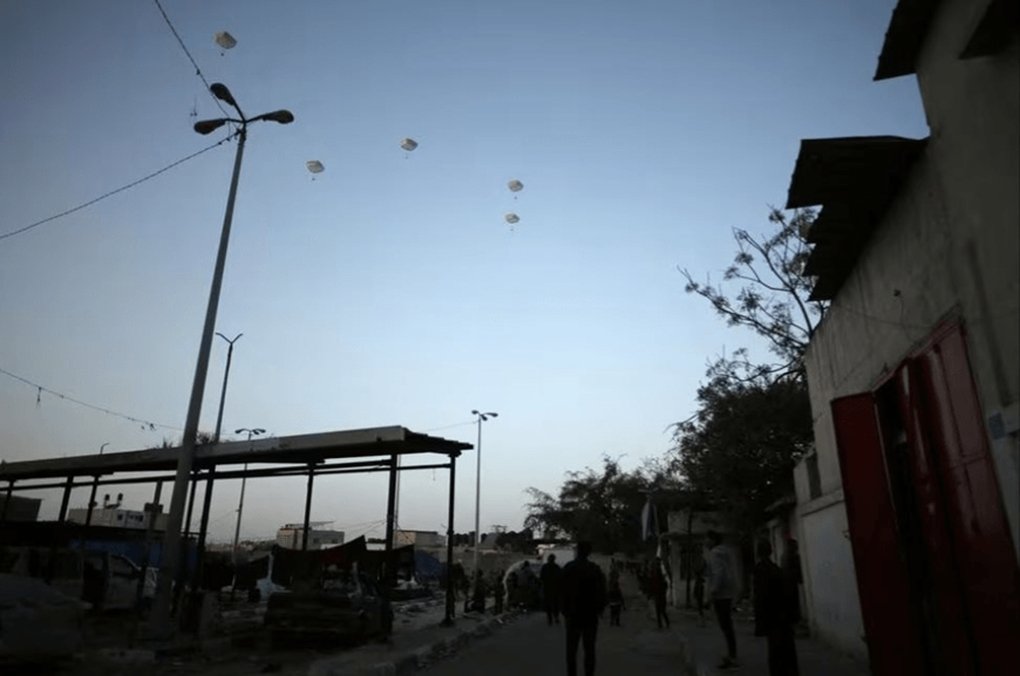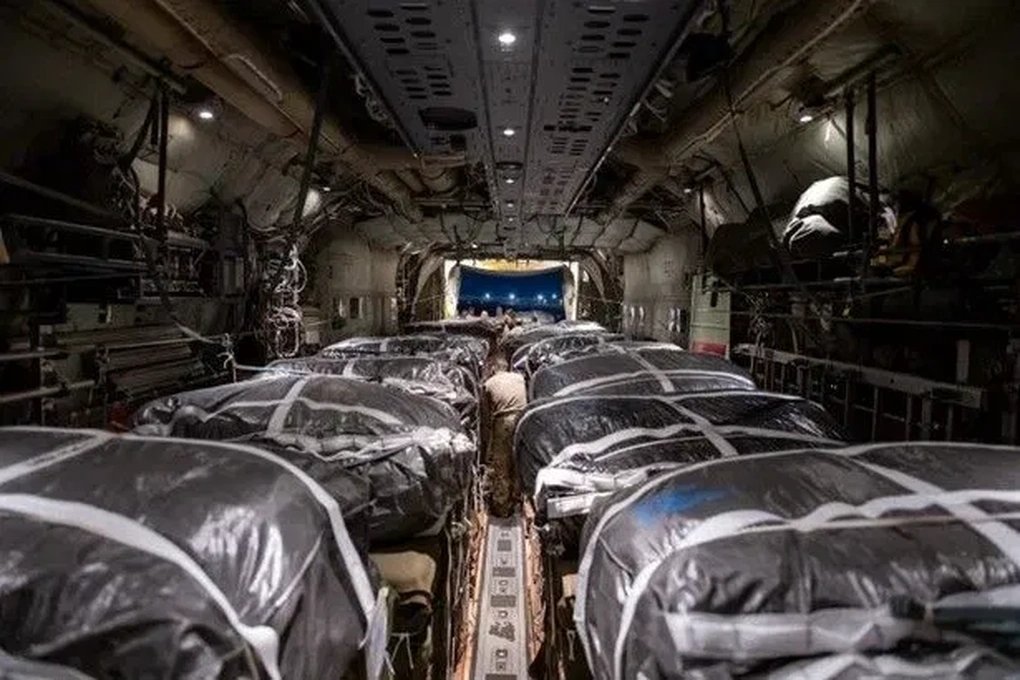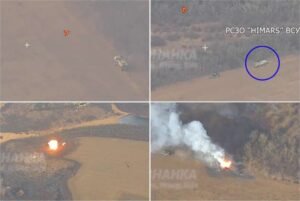
Airdropping aid is very expensive and ineffective, why does the US still do it in Gaza? 0
(Dan Tri) – Dropping aid from planes is a very expensive and ineffective way, while flights are currently not enough to meet the needs of more than 2 million people trapped in Gaza.
The US dropped aid into Gaza on March 2 (Photo: Reuters).
On March 2, local time, US military planes dropped the first aid shipment into the Gaza Strip, opening the emergency humanitarian aid at the direction of President Joe Biden.
With this aid, the US became at least the fifth country to release aid to Gaza since the outbreak of fighting here in October 2023.
Accordingly, from 3:00 p.m. to 5:00 p.m., local time, 3 C-130 aircraft of the US Central Command (CENTCOM) dropped 66 packages containing about 38,000 meals on the southwestern Gaza beach.
This operation is carried out in coordination with the Royal Jordanian Air Force.
According to the United Nations, the total volume of aid entering Gaza in February decreased by 50% compared to January. At least 576,000 people in the Gaza Strip – equivalent to 25% of the population, are on the brink of famine.
However, according to experts, dropping aid from planes is an expensive and ineffective way of providing aid.
But why do the US and many other countries still do this?
How bad are conditions in Gaza?
Last week, when people in the area saw the umbrellas swinging in the sky, they ran to pick them up.
After nearly five months of war, Gazans are forced to eat the grain normally used to feed livestock that they scavenged.
The World Health Organization (WHO) said on February 27 that 24 out of 36 hospitals in this area were destroyed by Israeli bombing, while the rest were only partially operational.
Israeli officials said it was Hamas’s coordinated attack early on the morning of October 7, which killed about 1,200 people in Israel and took another 253 hostage, that caused the current conflict.
After the attack by Hamas, Israel tightened the blockade.
Jordan was the first country to drop aid from an airplane on November 6, 2023.
Last week, the country joined Egypt, the UAE and France in a new effort to provide direct aid to civilians.

Aid dropped by the US includes thousands of pre-cooked meals (Photo: US Central Command).
How to drop aid?
Jordan’s military on February 29 loaded sealed boxes containing prepared food, medicine, diapers and feminine hygiene products onto a C-130 Hercules transport plane at King Abdullah Air Base.
The plane took off westward over Tel Aviv to the Mediterranean Sea and turned south toward Gaza.
Deliveries to hospitals are coordinated with contacts on the ground.
When the aid fell into the sea, Gazans boarded small boats to retrieve the aid.
Many difficulties
Not airlifting aid like this is very expensive.
Jordan’s army declined to provide details of the costs, but Philippe Lazzarini, head of UNRWA, the main United Nations agency for Palestinian affairs, described them as `a last resort, a
Airlifting aid may make logistical sense in some cases – such as to meet urgent hospital needs – but aid experts say they should not be the main route.
`I don’t think dropping food on the Gaza Strip will be the answer to the current reality. The real answer is: open the border gates and send convoys and medical support into the Gaza Strip,`
Ms. Janti Soeripto, head of the organization `Save the Children`, called the airdrops in Gaza `theatrical` and warned that they would cause chaos on the ground.
`You really can’t guarantee who gets it and who doesn’t, can’t guarantee where it’s going to be dropped. You could be putting people in danger,` she said, describing the children wading in.
It is difficult to track where aid falls.
Why is the US joining this effort?
The need to deliver more aid safely was made clear on February 29, when Gaza suffered one of the deadliest episodes of the war: a shooting that killed at least 100 Palestinians.
The attack sparked a wave of strong criticism, including from Israel’s allies.
President Biden himself also authorized the US military to airdrop into Gaza the next day.
US National Security Council spokesman John Kirby said the airdrops were intended to `complement ground transportation` and not replace it.






